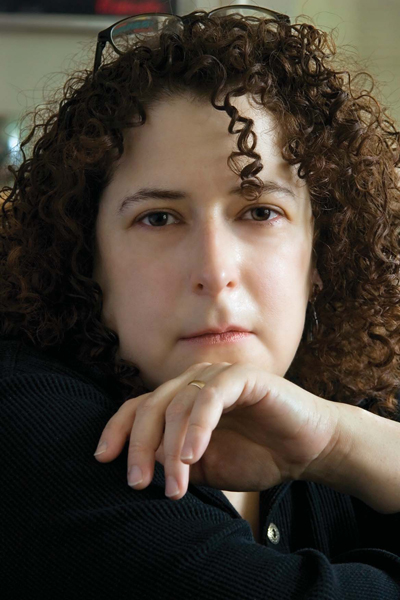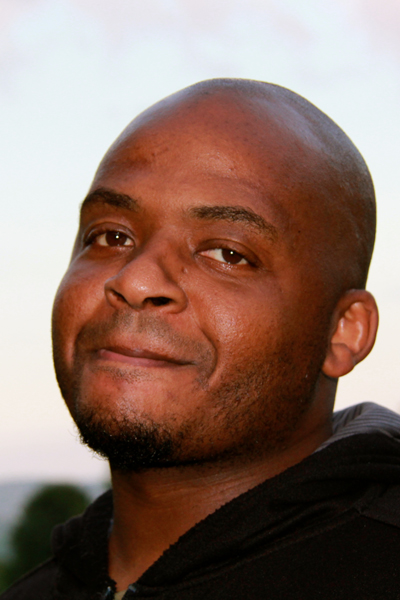Margalit Fox and Kiese Laymon win Stanford's 2014 Saroyan Prize for Writing
Every two years, Stanford awards the Saroyan Prize for International Writing to encourage new or emerging writers in nonfiction and fiction.
The story of an American scholar's quest to decipher mysterious script found on ancient clay tablets and a witty coming-of-age novel about a Mississippi teenager have each won a 2014 William Saroyan Prize for International Writing.
This year's awards honor Margalit Fox's nonfiction book The Riddle of the Labyrinth: The Quest to Crack an Ancient Code (HarperCollins Publishers, 2013) and Kiese Laymon's debut novel, Long Division (Agate Bolden, 2013). Each winner, selected from a field of 230, will receive $5,000.
The prizes are awarded every two years by Stanford University Libraries, with support from the William Saroyan Foundation. The prizes honor the life and legacy of the American writer and playwright William Saroyan.
Scholarly sleuthing
The Riddle of the Labyrinth pays homage to an unheralded hero – Alice Kober, an American professor whose contributions to unraveling the inscription on clay tablets found in 1900 at the Palace of Knossos in Crete received little mention in earlier accounts. Critics have called it a paleographic detective procedural.
Fox, a senior writer at the New York Times who trained as a linguist, brings to life Kober's scholarly determination to solve one of the great academic riddles of the 20th century – deciphering ancient inscriptions that bore no resemblance to a known alphabet.
Fox told NPR's All Things Considered that Kober, a classics professor at Brooklyn College, would retreat to her house each day after teaching, "sit at her dining table, cigarette burning at her elbow," and pore over hundreds of words and symbols. Kober, who died in 1950, worked on the project for about 20 years.
The University of Texas recently opened Kober's personal papers to scholars. The collection includes 180,000 handmade annotated cards that Fox said helped form the foundational "forensic playbook" for deciphering the mysterious script.
The Riddle of the Labyrinth also focuses on two other central figures of the decipherment, Arthur Evans, the Victorian archaeologist who unearthed the tablets, and Michael Ventris, the amateur linguist who studied Kober's methods and observations, and eventually solved the riddle in 1952.
The New York Times selected The Riddle of the Labyrinth as one of the "100 Notable Books of 2013."
Debut novel honored
Laymon, a writer, editor and professor of English and Africana studies at Vassar College, set his debut novel, Long Division, in the same Mississippi woods where he played as a child.
The novel uses a book-within-a-book technique, weaving two stories that span the Freedom Summer of 1964 to the present day.
Long Division opens in 2013 with a "sentence competition" in which teenager City Coldson tells off the judges for asking him to use the word "niggardly" in a sentence. He becomes a viral sensation, arousing the ire of his mother, who sends City to his grandmother's house in rural Mississippi. There he starts reading a paperback novel, set in 1985, about another 14-year-old also named City. Through the book, and a hole in the ground in the woods, the teens travel in time.
In a 2013 review in the Boston Review, Lucy McKeon wrote: "In a multilayered, allusion-packed, time-traveling plot set in Mississippi, Long Division takes us, nesting-doll style, from 2013 to 1985, 1964 and back, engaging complex questions of race, violence, gender, sexuality and our relationship to history."
Laymon said he used humor to combat the tragedies exposed throughout his book.
"I think this book is dark in many ways, filled with critiques of race, gender, geography and the nation as a whole," he wrote in a Q&A at the back of the book. "But I also hope people will think it's a crazy funny book."
Copies of The Riddle of the Labyrinth and Long Division have been added to Stanford Libraries' collection.
The finalists for the 2014 Saroyan Prize for fiction were The Facades by Eric Lundgren (Overlook Duckworth, Peter Mayer Publishers, 2013) and A Marker to Measure Drift by Alexander Maksik (Alfred A. Knopf, 2013). The nonfiction finalist was The Boys in the Boat by Daniel James Brown (Viking, 2013).
This year's judging panels included award-winning alumni authors; an archaeologist who is also a poet, biographer, classical music composer and illustrator; and Hank Saroyan, writer, performer and nephew of William Saroyan.
The Saroyan Prize was last awarded in 2012, when the fiction prize went to Daniel Orozco for his short story collection Orientation and Other Stories, and the nonfiction prize went to Elisabeth Tova Bailey for The Sound of a Wild Snail Eating.
William Saroyan was the author of the Pulitzer Prize-winning play The Time of Your Life (1939-40), the novel The Human Comedy (1943) and many volumes of short stories, essays and memoirs.
Born in Fresno in 1908 to Armenian parents, Saroyan was a high school dropout and largely self-educated. He is best known for his short stories about the experiences of immigrant families and children in California. He died in 1981.
Stanford University Libraries houses the William Saroyan Collection, which includes manuscripts, personal journals, correspondence, drawings and other material.
Excerpts from the 2014 Saroyan Prize-winning books
From The Riddle of the Labyrinth, by Margalit Fox:
This is the true story of one of the most mesmerizing riddles in Western history and, in particular, of the unsung American woman who would very likely have solved it had she only lived a little longer. It is the account of the half-century-long attempt to decipher an unknown script from the Aegean Bronze Age, whose bare-bones name, Linear B, belies both its bewitching beauty and its inexorable pull.
I first encountered the tale of Linear B more than thirty years ago, as a moony adolescent, and it has lost none of its mystery or narrative power since. At its center was a set of tablets, buried for almost three thousand years and first unearthed only at the dawn of the twentieth century. Dating from the second millennium B.C., the tablets were inscribed with a set of pre-historic symbols like no writing ever seen. Despite the efforts of investigators around the globe, no one could discover what language they recorded, much less what the curious inscriptions said.
The decipherment of Linear B came to be considered one of the most formidable puzzles of all time, and for five decades, some of the world's most distinguished scholars attempted without success to crack the code. Then, in 1952, the tablets were deciphered seemingly in a single stroke – not by a scholar but by an impassioned amateur, an English architect named Michael Ventris. Young, dashing, and brilliant, Ventris had a long obsession with the tablets, a prodigy's gift for languages, and, as I would later learn, a sorrowful history. His life, to my teenage self, was the stuff of high romance. Still more romantic was the fact that his great triumph culminated in tragedy: In 1956, just four years after solving the riddle, Ventris died at the age of thirty-four, under circumstances that remain the subject of speculation even now.
But as captivating as it was, the story I knew – the only story anyone knew – was incomplete. A major actor in the drama was missing: an American woman named Alice Elizabeth Kober. Working quietly and meticulously from her home in Brooklyn, Kober was by the mid-twentieth century the world's leading expert on Linear B. Though largely forgotten today, she came within a hair's breadth of deciphering the script before her own untimely death in 1950.
Alice Kober's story is presented here in full for the first time. As her published papers and private correspondence make plain, it was she who built the foundation on which Ventris's successful decipherment stood, and it is clear that without her work Linear B would never have been deciphered when it was, if at all. In recent years, Kober's role in the decipherment has been likened to that of Rosalind Franklin, the English scientist now considered the unsung heroine of one of the most signal intellectual feats of the modern age, the mapping of the molecular structure of DNA by Francis Crick and James Watson.
From Long Division, by Kiese Laymon:
… I didn't have a girlfriend from kindergarten all the way through the first half of ninth grade and it wasn't because the whole high school heard Principal Jankins whispering to his wife, Ms. Dawsin-Jankins, that my hairline was shaped like the top of a Smurf house. I never had a girlfriend because I loved this funky girl named Shalaya Crump. The last time Shalaya Crump and I really talked, she told me, "City, I could love you if you helped me change the future dot-dot-dot in a special way."
Shalaya Crump was always saying stuff like that, stuff you'd only imagine kids saying in a dream or on those R-rated movies on HBO starring spoiled teenagers. If any other girl in 1985 said, "the future dot-dot-dot," she would have meant 1986 or maybe 1990 at the most. But not Shalaya Crump. I knew she meant somewhere way in the future that no one other than scientists and dope fiends had ever thought of before.
Shalaya Crump lived down in Melahatchie, Mississippi across the road from Mama Lara's house. A year ago, she convinced me that plenty of high school girls would like me even though my hips were way wider than a JET centerfold's, and the smell of deodorant made me throw up. The thing was that none of the ninth-grade girls who liked me wore fake Air Jordans with low socks, or knew how to be funny in church while everyone else was praying, or had those sleepy, sunken eyes like Shalaya Crump. Plus, you never really knew what Shalaya Crump was going to say and she always looked like she knew more than everybody around her, even more than the rickety grown folks who wanted other rickety grown folks to think they knew more than Yoda.
It's hard to ever really know why you love a girl, but all I know is that Shalaya Crump made me feel like it was okay not to know everything. You could feel good around Shalaya Crump just by knowing enough to get by. That's what I loved about her most. Sometimes, she asked these hard questions about the future but she didn't treat you like chunky vomit when you didn't get the answer right.
Media Contact
Gabrielle Karampelas, Stanford University Libraries: office: (650) 497-4414, cell: (650) 492-9855, gkaram@stanford.edu


Share This Story